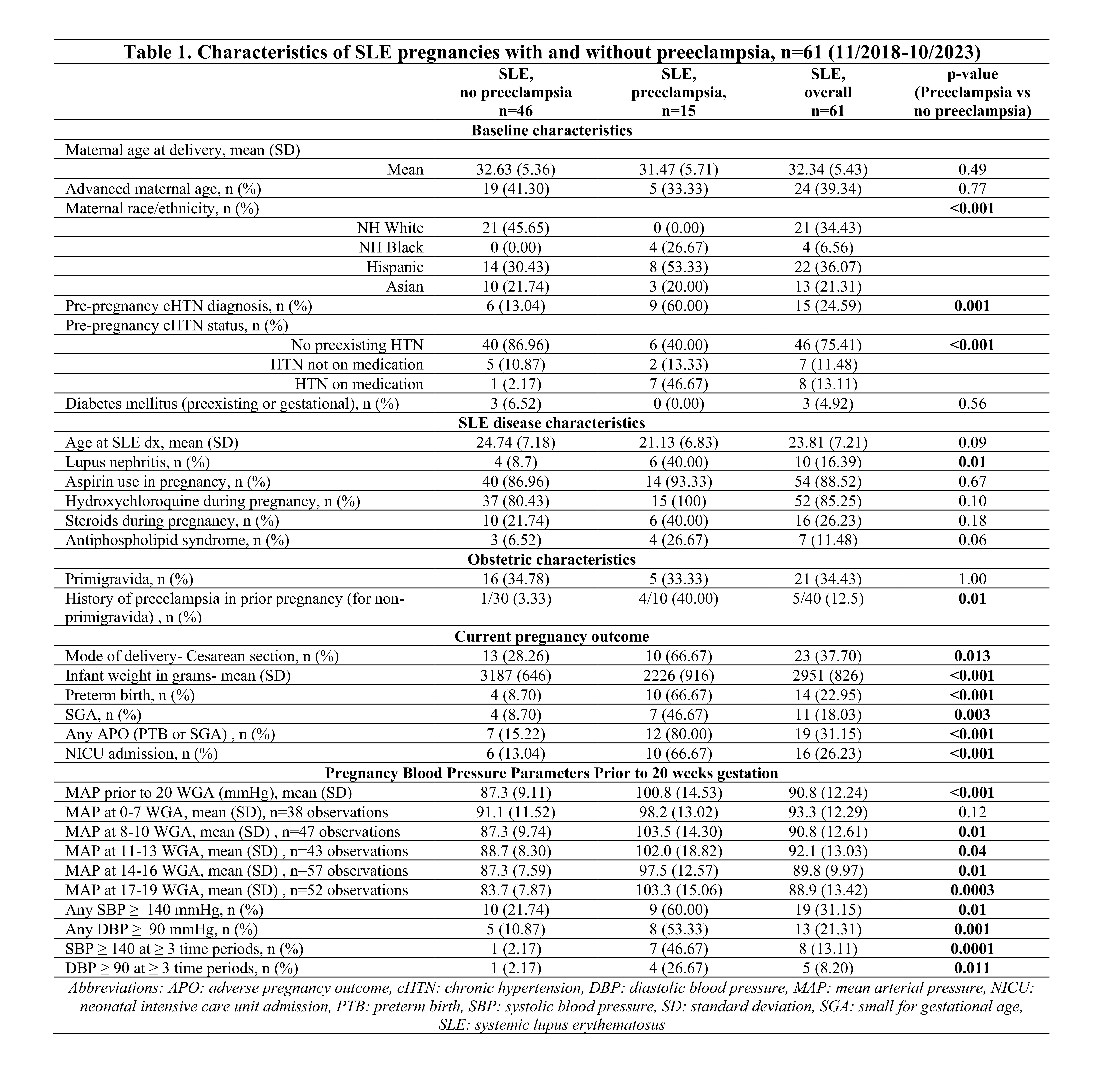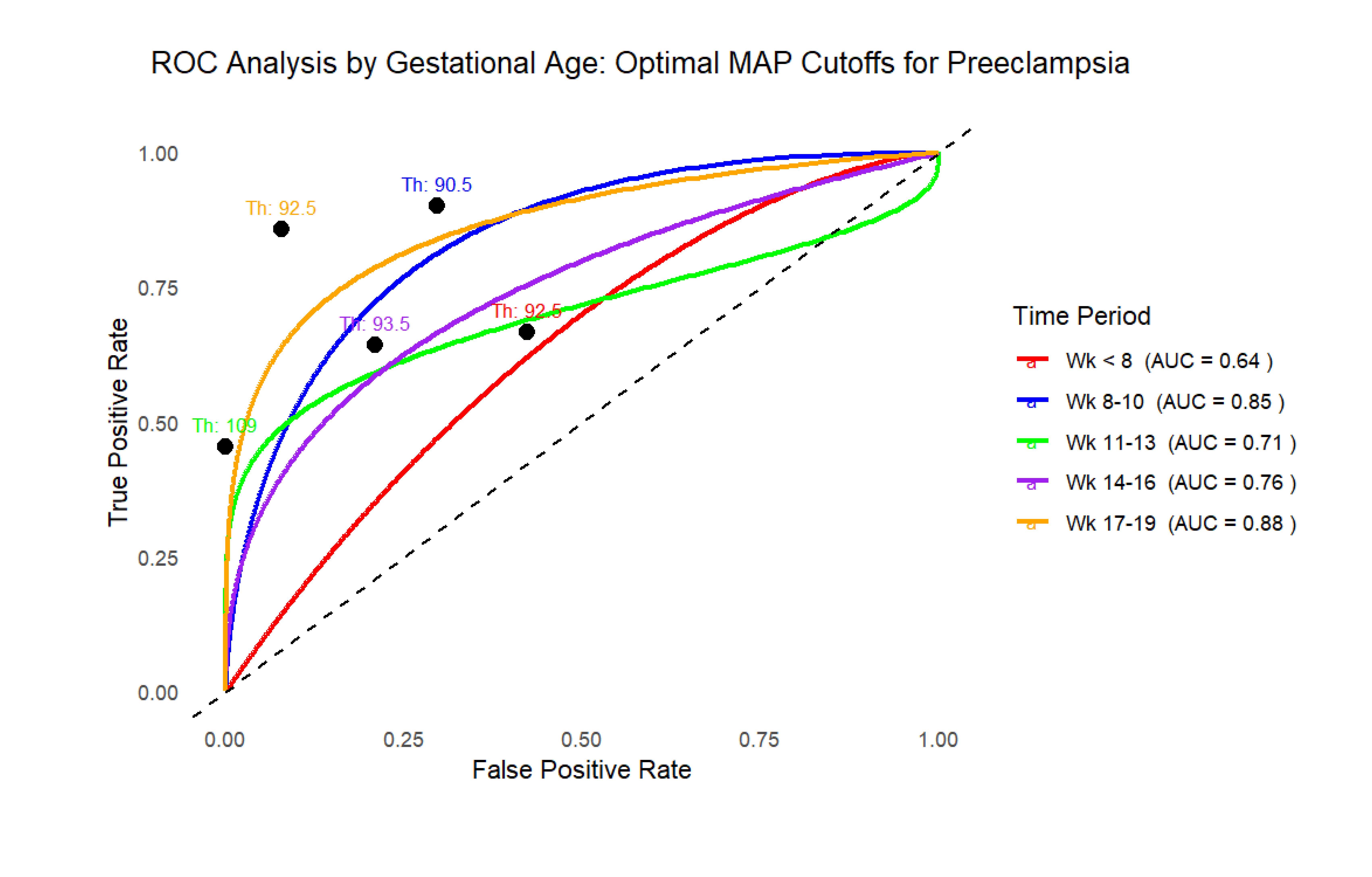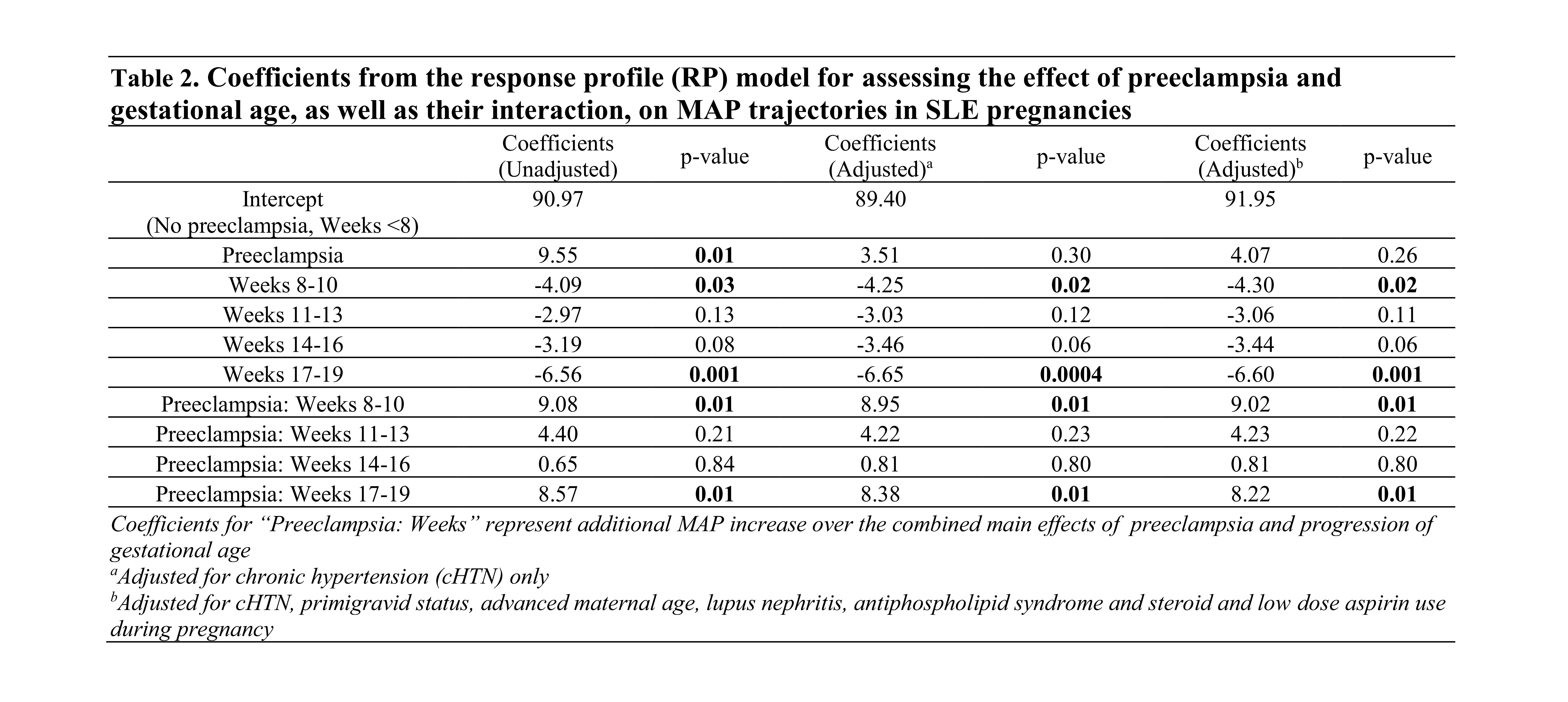Session Information
Session Type: Poster Session A
Session Time: 10:30AM-12:30PM
Background/Purpose: Systemic Lupus Erythematosus (SLE) is a known risk factor for chronic hypertension (cHTN) as well as preeclampsia. While the role of cHTN is known, less is known about the utility of early gestational blood pressure (BP) trends in predicting preeclampsia risk in SLE. This study explores variations in trajectories of early gestational mean arterial pressure (MAP) among SLE pregnancies with and without preeclampsia.
Methods: We retrospectively analyzed patients with SLE who delivered at UC San Diego from 11/2018-10/2023. MAP was calculated from the systolic and diastolic BP obtained during clinic visits before 20 WGA. Logistic regression was used to calculate the odds ratio (OR) and 95% confidence intervals (CI) of the association of early gestational MAP with preeclampsia, adjusting for pre-pregnancy diagnosis of cHTN, age, gravidity, lupus nephritis, antiphospholipid syndrome, and steroid and aspirin use during pregnancy. Receiver Operating Characteristic (ROC) curves were used to assess the predictive accuracy of MAP at 0-7, 8-10, 11-13, 14-16, and 17-19 WGA for preeclampsia. Response profile model was used to study differences in MAP trends prior to 20 WGA for SLE pregnancies that did or did not develop preeclampsia.
Results: Among 61 deliveries from patients with SLE with at least one BP reading before 20 WGA, 15 developed preeclampsia. The preeclampsia group more frequently had pre-pregnancy cHTN and sustained systolic and diastolic BP elevations across multiple early gestational periods (Table 1). Higher MAP before 20 WGA was associated with preeclampsia (adjusted OR: 1.22, 95% CI: 1.05–1.41, p = 0.01). ROC curves showed the highest predictive accuracies of MAP at 8-10 and 17-19 WGA, with the area under curve (AUC) of 0.85 and 0.88 for MAP values of 90.5 and 92.5 mmHg, respectively (Figure 1).
For SLE pregnancies without preeclampsia versus those who developed preeclampsia, response profile model indicated lower baseline MAP (at 0-7 WGA) by 9.6 mmHg (unadjusted), and 3.5 mmHg after adjusting for cHTN, with further declines of 4.3 mmHg at 8-10 WGA and 6.7 mmHg at 17-19 WGA. Conversely, in the preeclampsia group, after adjusting for cHTN, MAP increased by 4.7 mmHg and 1.7 mmHg during the same periods, from the baseline MAP at 0-7 WGA; these values were 9.0 and 8.4 mmHg higher than expected MAP values if the preeclampsia group had followed the same trajectory as the non-preeclampsia group (interaction term p=0.01) (Table 2).
Conclusion: Higher MAP before 20 WGA was associated with an increased risk of preeclampsia, even after adjusting for known cHTN, with the highest predictive accuracies for 8-10 and 17-19 WGA. Importantly, diverging MAP trends, with a decline in the non-preeclampsia group aligning with expected response in physiological pregnancy in contrast to the increasing MAP values in the preeclampsia group, particularly at 8-10 and 17-19 WGA, may serve as early clues, aiding in risk stratification. The role of early gestational MAP values and trajectories, and whether a good response to antihypertensive therapy mitigates the risks, should be explored in larger prospective studies.
* `coords` function in the `pROC` package used to identify the optimal threshold (cutoff) MAP value to maximize predictive accuracy for preeclampsia
#AUC: area under the ROC curve
To cite this abstract in AMA style:
Dhital R, Poudel D, Emeruwa U. Clues from Early Gestational Mean Arterial Pressure in Predicting Preeclampsia Risk in Systemic Lupus Erythematosus (SLE) [abstract]. Arthritis Rheumatol. 2024; 76 (suppl 9). https://acrabstracts.org/abstract/clues-from-early-gestational-mean-arterial-pressure-in-predicting-preeclampsia-risk-in-systemic-lupus-erythematosus-sle/. Accessed .« Back to ACR Convergence 2024
ACR Meeting Abstracts - https://acrabstracts.org/abstract/clues-from-early-gestational-mean-arterial-pressure-in-predicting-preeclampsia-risk-in-systemic-lupus-erythematosus-sle/



